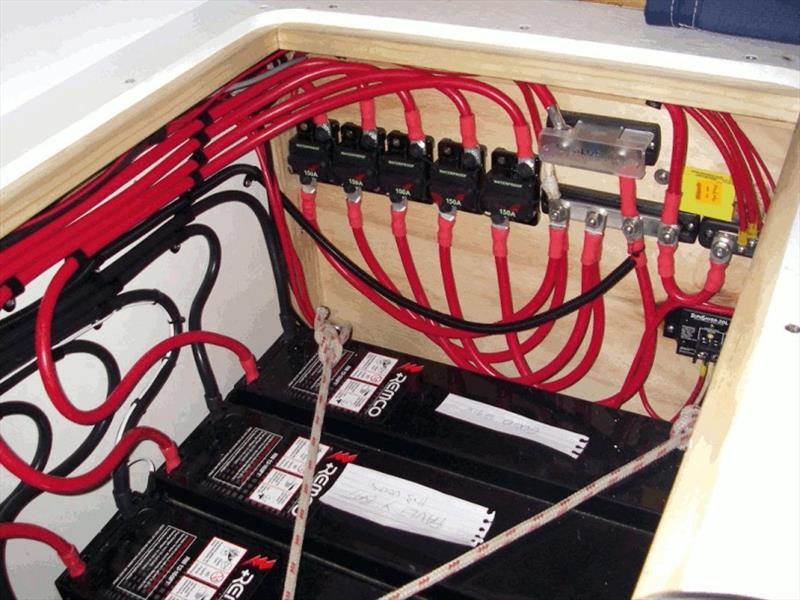
Global Solo Challenge: Battery and power management onboard a sailboat
by Global Solo Challenge 29 Sep 2021 22:45 AEST

Services batteries bank © Global Solo Challenge
Almost every sailing or motor boat has on board a more or less complex electrical system and a variable number of batteries. This depends on the size of the boat, the instruments installed and the equipment on board.
Whatever the level of complexity, the same basic principles apply.
The electrical circuits of a sailboat and the batteries
First and foremost, electrical circuits on board a boat differ from domestic electrical circuits in the type of current used. Current is continuous rather than alternating and differs in voltage. The systems of the boats are at 12 or 24 volts, instead of the 220 of the domestic circuits in Europe.
On smaller sailboats we usually find 12 volt electrical circuits. On sailboats from 15 meters upwards and on motor boats we find 24 volt electrical circuits. Therefore, when you buy a new instrument or electrical device, check its compatibility with your on-board system.
Much electronics such as a chartplotters will have an automatic mechanism for selecting the correct voltage. Other types of equipment, such as a bilge pumps or watermakers, are supplied separately for 12 or 24 volt systems.
When we first analyse the electrical circuit of a new boat what is the greatest difficulty? It is not so much in understanding the basic principles of an electrical system. Often, the most difficult task is to untangle masses of electrical wires without labels.
If you get your hands on your electrical system, learn how to label each wire. Not so much for elegance but to be able to solve a problem quickly in an emergency.
To get to understand an on-board system we will first have to understand the basic circuits, simplified as much as possible, separated into categories.
Batteries for the inboard
From the positive pole of the inboard battery we will find a very thick red electrical cable that reaches the starter motor of the engine. From the engine, a black cable will return to the negative pole. A second wire of smaller diameter will be connected with the key on the control panel.
When you turn the key this secondary circuit will cause a relé to switch and the primary starter circuit to power the starter which by rotating will start the inboard. Of course this is a simplification, on a diesel we will find many other circuits and wires that are part of the basic circuit.
Such as cooling water temperature and oil pressure sensors. As well as the circuit of the pre-heating glow plugs of the combustion chambers of each cylinder.
If we eliminate everything else on board the boat this is the minimum circuit that allows our propulsion system to start. Knowing which cables refer to the starter motor will save you a lot of time if something goes wrong at sea.
The most frequent cause of problems on this circuit is oxidation of contacts. Oxidation prevents starting by reducing the amount of peak current flow. In fact, when we start a diesel engine, the initial peak absorption is very high.
Any contact oxidation problem can jeopardize the correct operation of the system. Other common problems are caused by malfunctions of the starter motor. Unfortunately on modern inboard models there is little you can do, it is not possible to start an inboard by hand if the starter motor fails. So take care to check the status of your starting system regularly.
Continue reading the full article here...